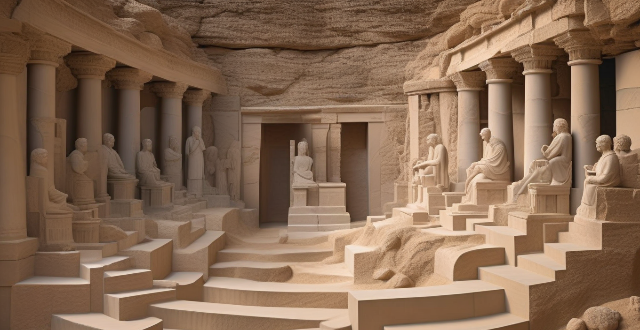Art is a powerful medium for cultural exchange, promoting understanding and empathy between different societies. It transcends language barriers and connects people on a deeper level. Art can facilitate mutual understanding by exposing individuals to diverse perspectives and experiences. Visual arts provide a visual representation of culture, while performing arts offer a dynamic form of cultural exchange. Literary arts explore the inner workings of a culture through its stories and narratives. Art also promotes creativity and innovation within cultures, encouraging experimentation with new ideas. Artistic collaborations between artists from different cultures can result in groundbreaking works that blend traditional elements with modern influences. Art serves as a means of preserving cultural heritage, documenting the history, traditions, and customs of a society. Museums and galleries showcase art from different cultures, promoting cultural awareness and appreciation among the public. Cultural festivals celebrate the artistic achievements of different cultures through various forms of performance. Overall, art plays a vital role in cultural exchange by enhancing mutual understanding, promoting creativity and innovation, and preserving cultural heritage.

The Role of Art in Cultural Exchange
Art has always been a powerful medium for cultural exchange, serving as a bridge between different societies and promoting understanding across borders. It is an integral part of human expression that transcends language barriers and allows people to connect on a deeper level.
Enhancing Mutual Understanding
Art can facilitate mutual understanding by exposing individuals to diverse perspectives and experiences. Through art, people can gain insights into the values, beliefs, and traditions of other cultures. This exposure helps to break down stereotypes and foster empathy, leading to more open-minded attitudes towards others.
Visual Arts
Visual arts, such as painting and sculpture, provide a visual representation of culture that can be easily understood by viewers. They often depict historical events, religious practices, or everyday life, offering a glimpse into the lives of people from different backgrounds.
Performing Arts
Performing arts, including music, dance, and theater, offer a dynamic form of cultural exchange. They allow performers to share their artistic expressions with audiences from various cultures, creating a shared experience that transcends language barriers.
Literary Arts
Literary arts, such as poetry and literature, offer a way to explore the inner workings of a culture through its stories and narratives. They provide a window into the thoughts and emotions of people from different backgrounds, helping readers to develop a deeper understanding of their experiences.
Promoting Creativity and Innovation
Art also plays a crucial role in promoting creativity and innovation within cultures. By exposing individuals to new artistic styles and techniques, it encourages them to think outside the box and experiment with new ideas. This can lead to the development of unique artistic expressions that reflect the diversity of each culture.
Cross-Cultural Collaboration
Artistic collaborations between artists from different cultures can result in groundbreaking works that blend traditional elements with modern influences. These collaborations not only showcase the richness of each culture but also inspire further creative exploration and innovation.
Preserving Cultural Heritage
Art serves as a means of preserving cultural heritage by documenting the history, traditions, and customs of a society. It provides a tangible record of a culture's past, ensuring that its legacy is passed down to future generations.
Museums and Galleries
Museums and galleries play a vital role in showcasing art from different cultures, allowing visitors to appreciate the beauty and significance of these artworks. They serve as educational institutions that promote cultural awareness and appreciation among the public.
Cultural Festivals
Cultural festivals celebrate the artistic achievements of different cultures through music, dance, theater, and other forms of performance. They provide opportunities for people to engage with art from diverse backgrounds and gain a deeper understanding of their cultural significance.
In conclusion, art plays a vital role in cultural exchange by enhancing mutual understanding, promoting creativity and innovation, and preserving cultural heritage. It serves as a powerful tool for connecting people across borders and fostering empathy and respect for one another's differences.